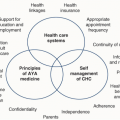Hypertension is one of the most common chronic diseases in adults, affecting about 30% of adults of all ages and 7.3% of young adults 18 to 39 years of age.
1,
2 In children <18 years of age, however, hypertension is much less common, with recent screening studies demonstrating a 3% to 4% prevalence of persistent hypertension. Some studies have reported a higher prevalence of up to 5% in obese minority adolescents,
3 reflecting a similar impact of the obesity epidemic as seen in adults.
2,
4 Other recent analyses have demonstrated an increase in prevalence of hypertension in children and adolescents ≤18 years of age, again likely because of the obesity epidemic.
5 On the other hand, the prevalence of hypertension in those ≥18 years of age has remained stable over time.
2Most adolescents and adults with hypertension have primary hypertension—that is, no identifiable underlying cause can be found for their blood pressure (BP) elevation. Since most hypertensive adolescents and young adults (AYAs), particularly those with primary hypertension, are asymptomatic, it is imperative to measure BP whenever an adolescent or young adult is seen for health care in order to detect hypertension and institute appropriate measures to reduce cardiovascular risk.




